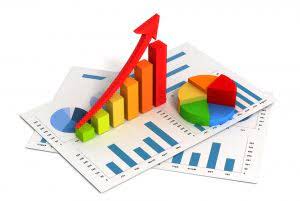
These costs may include but are not limited to the purchase, transportation, installation, and maintenance of the equipment. It is important for businesses to carefully Accounting Security calculate these costs before investing in new equipment to ensure that it is a viable financial decision. Incremental cost is the cost incurred due to an additional unit of a product being produced.
- While marginal cost focuses on the change in total costs due to an increase or decrease in production, average cost compares the overall costs of production to the overall output.
- It refers to the additional cost incurred when producing extra units of a product or service.
- Understanding incremental cost is critical in developing pricing strategies, making production decisions, and assessing the impact of changes in production levels on profitability.
- Prior to providing the services, Entity A incurs costs of $100,000 related to data centre migration and testing.
- It refers to the measure of the quantity of goods or services produced or the level of activity undertaken by a business.
Influences From Capacity Changes
For longer-term contracts, amortization is typically done on a systematic basis. Get ready to crunch some numbers and determine the baseline cost, incremental cost or as I like to call it, the ‘pre-incremental’ cost. If we look at our above example, the primary user is product ‘X’ which was already being manufactured at the plant and utilizing the machinery and equipment.
Resources Consulted

Under the Fair Labor Standards Act (FLSA), non-exempt employees must be paid 1.5 times their regular hourly wage for overtime, significantly increasing expenses. Initially, as production increases, Marginal Costs may decrease due to efficiencies gained. As the number of units being produced by that factory grows, the cost of the factory (along with all the other costs) is divided by a larger number, causing the Marginal Cost to fall. But as production continues to increase, eventually new costs are incurred, such as needing to open a second factory. This dynamic, the initial fall and the subsequent rise, is what creates the familiar “U” pattern.
Calculating incremental cost
In summary, incremental cost analysis empowers decision-makers to weigh the benefits against the additional expenses. By considering both short-term and long-term implications, organizations can make strategic choices that align with their goals and resources. Remember, incremental cost isn’t just about numbers; it’s about optimizing outcomes and shaping a better future. It is closely related to incremental cost but focuses on a per-unit basis rather than the retained earnings total additional cost of a decision.

When businesses expand operations or launch new projects, several cost components contribute to the total increase in expenses. These include direct costs such as materials and labor, as well as indirect costs that rise with higher production levels. Understanding these elements helps businesses estimate financial impact and make informed decisions. Incremental cost focuses on the money that companies have to invest in producing additional units. It can be related to the usage of resources, raw materials, labour costs, etc. Knowledge of incremental cost and incremental revenue will help you expand your business and make extra profit.

